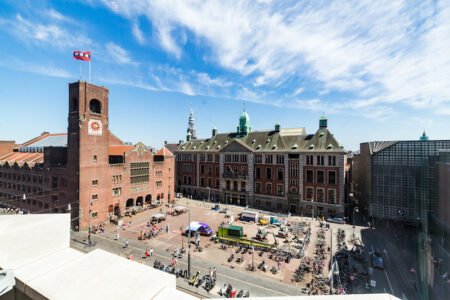Italian confectionery market showing resilience and innovation

The Italian confectionery market continues to show resilience in terms of global sales and innovation, despite challenging economic conditions. Neill Barston reports, with analysis from Euromonitor International
Italy remains renowned for its vibrant confectionery ranges that have remained popular with markets around the world.
However, as studies from research group Euromonitor have found, in 2018, while the chocolate sector grew by one per cent in volume, reaching €1.9 billion in sales, retail volumes were reportedly declining.
The results come in the wake of international studies highlighting the fact that consumers are seeking healthier snack options in ever-greater numbers, which in turn places pressure on the traditional confectionery market.
With a wider economic slowdown affecting a number of fields of industry (with just 0.2 per cent national growth for the first quarter of 2019), the confectionery sector has faced its fair share of challenges.
However, major equipment manufacturers operating within the confectionery market, as well as equipment businesses, including those represented by UCIMA, the Italian packaging organisation, have experienced encouraging results.
In terms of finished products, Ferrero reportedly remains the dominant player within the domestic market.
Its overseas operations have also been noted, with CEO of the company’s US division Paul Chibe recently speaking to Confectionery Production at Sweets and Snacks Expo, stating that the business “was now the fastest growing in the American sector”.
Similarly, Perfetti Van Melle president Sylvia Buxton says the business is enjoying strong fortunes across its international markets with a number of new products to boost its existing portfolio.
The Italian division of Mars has also enjoyed a prominent position within the segment, with the brand continuing its programme of global launches.
According to Euromonitor, Chocolate confectionery continues to face an upgrade towards products made with premium cocoa.
The research group said that tablets were the strongest performer last year, with 5 per cent current value growth and one per cent retail volume growth.
Euromonitor says that although remaining cautious about their spending, Italian consumers continued to search for premium products in many of their food choices, given that they believe that premium ingredients pair with healthier and more ethical items.
From a volume perspective, sales of seasonal chocolate have been improving somewhat in retail terms.
Researchers from Euromonitor explain that while retail experienced modest growth, the foodservice channel is still recovering from previous years of recession, when consumers were intent on purchasing products at discounted prices in supermarkets, instead of buying on impulse.
Sales of chocolate confectionery are regular throughout the year in Italy, and some products such as boxed assortments are available year-round across different channels.
As Euromonitor adds, the health and wellness trend is becoming ubiquitous in Italy, with consumers paying attention to what and how much they eat, or discussing what foods are the best to stay young and enhance their wellbeing. Obesity and heart disease are the most concerning health issues.
Consequently, in chocolate confectionery traditional milk chocolate must face competition from dark chocolate as well as chocolate made from single origin cocoa, in addition to sugar free and vegan tablets. The growth in markets for the latter two products is gradually increasing across a number of locations around the world, but especially across Europe.
Since 1997, Caffarel has been part of Chocoladefabriken Lindt & Sprüngli, which also operates in Italy under the Lindt brand portfolio.
Caffarel was originally established in Turin in 1865, in Northern Italy, and was the creator of the famous Gianduiotto Chocolate, made with hazelnuts in its typical prism shape.
As both Caffarel and Lindt operate within the premium segment of chocolate confectionery, there have been concerns throughout the years about Lindt aiming at shadowing Caffarel to replace it with its products. On the contrary,
Caffarel’s steering team announced the company’s clear intention to diversify by growing its presence within foodservice, especially cafés and patisseries, and in December 2017, it opened a temporary chocolate boutique in Turin for holiday sales”.
Equipment mark
Within Italy’s equipment market, there seems a strong sense of resilience, with a number of businesses reporting a positive first half of 2019.
Among those posting encouraging results has been GSR, which says there remains a buoyant level of demand for its range of cocoa presses.
Its lines vary from small production, such as the one-pot presses, up to its largest presses operating with ‘20-pot’ production operations.
“GSR Cocoa Machinery, specialising in the production of pressing lines for the cocoa and oil-based seeds market, is benefitting from positive momentum. After a successful 2018 marked by great achievements and important new products, 2019 started well, with orders until 2021.”
Meanwhile, packaging specialists Acma, report a productive start to this year, recently laumching its new operator panel (Web HMI).
This was previewed during the 2019 Prosweets exhibition on the CW 800R, one of its units dedicated to the confectionery sector, where the new HMI was designed to simplify machine operation, featuring advanced functions to enable simple, intuitive use such as machine diagnostics and the replacement of machine parts.
For its part Sacmi Packaging and Chocolate has made significant inroads in upgrading its production capacity with a new wrapping unit in Castel San Pietro Terme.
Consequently, the company recently released its Vpack2 CFU/CDU, a multistyle intermittent motion wrapping line.
This operates up to 800ppm, designed for a range of chocolate products. In addition, the business released its Alpha 1 small horizontal conching machine, and the Beta X2, a vertical tempering machine allowing extreme flexibility handling chocolate.
Fellow Italian packaging business Cama also says the remainder of 2019 holds particular promise, with its new Molteno production complex almost complete.
A spokesperson says: “We are predicting turnover of nearly €90 million for this year, after a strong investment in human resources (up 40% compared to 2017/2018). This was based on a business plan that leverages a new organisational model focused on developing a “sense of ownership” for managers, coupled to an important corporate culture evolution – transitioning from the concept of employee to that of being stakeholders.”
With its equipment market demonstrating its global appeal and a strong flow of innovation from end product manufacturers, this year has so far seen Italy produce some encouragingly resilient results.



